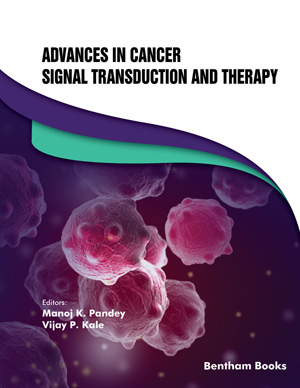About Book
Introduction
Cancer is driven by numerous genetic and epigenetic changes occurring at the cellular level. These changes drive normal cells to proliferate and escape processes that usually regulate their survival and migration. Many of these alterations are often associated with signaling pathways which regulate cell growth and division, cell death, survival, invasion and metastasis, and angiogenesis. Almost all cancer cells show high expression of signaling components including growth factor receptor tyrosine kinases (RTKs), small GTPases, serine/threonine kinases, cytoplasmic tyrosine kinases, lipid kinases, estrogen receptor, activation of transcription factors Myc and NF-κB, etc. Updated knowledge about these signaling components is highly desirable for researchers involved in developing therapies against cancer. Signal Transduction Research for Cancer Therapy covers advancements in research on the signaling pathways in the human body, especially in some types of cancers, such as breast cancer, pancreatic cancer and colon cancer. Key features of this volume include 8 focused topical reviews on signaling pathways in a specific cancer type, coverage of multiple cancer types (breast cancer, colon cancer, hepatocellular cancer, multiple myeloma, acute myeloid leukemia, and pancreatic cancer), and coverage of a wide array of signaling pathways (both receptor mediated and non receptor mediated pathways). This volume is essential reading for researchers in pharmaceutical R&D and postgraduate research programs in pharmacology and allied disciplines. Clinicians involved in oncology will also benefit from the information provided in the chapters. [Series Intro] This series provides scientists and clinicians with updated clinical information about signal transduction that will be valuable in their pursuit to investigate, develop, and apply novel agents to prevent or treat life-threatening diseases such as cancer. Contributions to the series will focus on methods that also enhance the quality of life for patients.
Indexed In
Table of Contents
Book Volume 1
Preface
Page: i-ii (2)
Author: Manoj K. Pandey and Vijay P. Kale
DOI: 10.2174/9789811458118120010001
List of Contributors
Page: iii-iv (2)
Author: Manoj K. Pandey and Vijay P. Kale
DOI: 10.2174/9789811458118120010002
Wnt Signaling in Breast Cancer Oncogenesis, Development and Progression
Page: 1-28 (28)
Author: Norman Fultang and Bela Peethambaran
DOI: 10.2174/9789811458118120010003
PDF Price: $30
CXCR4 Signaling and its Impact on Tumor Progression and Metastasis in Breast Cancer
Page: 29-50 (22)
Author: Dayanidhi Raman, Cory M. Howard, Sangita Sridharan and Augustus M.C. Tilley
DOI: 10.2174/9789811458118120010004
PDF Price: $30
Epidermal Growth Factor Receptor Signaling in Colon Cancer
Page: 51-84 (34)
Author: Avtar S. Meena and Pradeep K. Shukla
DOI: 10.2174/9789811458118120010005
PDF Price: $30
Targeting the PI3K/AKT/mTOR Signaling Pathway in Hepatocellular Carcinoma: Current State and Future Trends
Page: 85-98 (14)
Author: Neelam Yadav and Yoganchal Mishra
DOI: 10.2174/9789811458118120010006
PDF Price: $30
MAPK Signaling Pathway: A Central Target in Pancreatic Cancer Therapeutics
Page: 99-113 (15)
Author: Sahdeo Prasad and Sanjay K. Srivastava
DOI: 10.2174/9789811458118120010007
PDF Price: $30
Role of NF-κB Activation in Multiple Myeloma and Other Hematological Malignancies
Page: 114-130 (17)
Author: Loukik Arora, Frank Arfuso, Alan Prem Kumar and Gautam Sethi
DOI: 10.2174/9789811458118120010008
PDF Price: $30
Bruton’s Tyrosine Kinase Signaling and Advancement in Multiple Myeloma Therapy
Page: 131-158 (28)
Author: Krishne Gowda, Max Von Suskil, Omar S. Al-Odat, Jennifer Dang, Kuntal Bhowmick, Prachi S. Narayan and Shantu G Amin
DOI: 10.2174/9789811458118120010009
PDF Price: $30
The Tumor Microenvironment Mediated Signaling Pathways in the Progression of Acute Myeloid Leukemia
Page: 159-183 (25)
Author: Anup S. Pathania, Rachel Weber and Kishore B. Challagundla
DOI: 10.2174/9789811458118120010010
PDF Price: $30
Subject Index
Page: 184-193 (10)
Author: Manoj K. Pandey and Vijay P. Kale
DOI: 10.2174/9789811458118120010011


